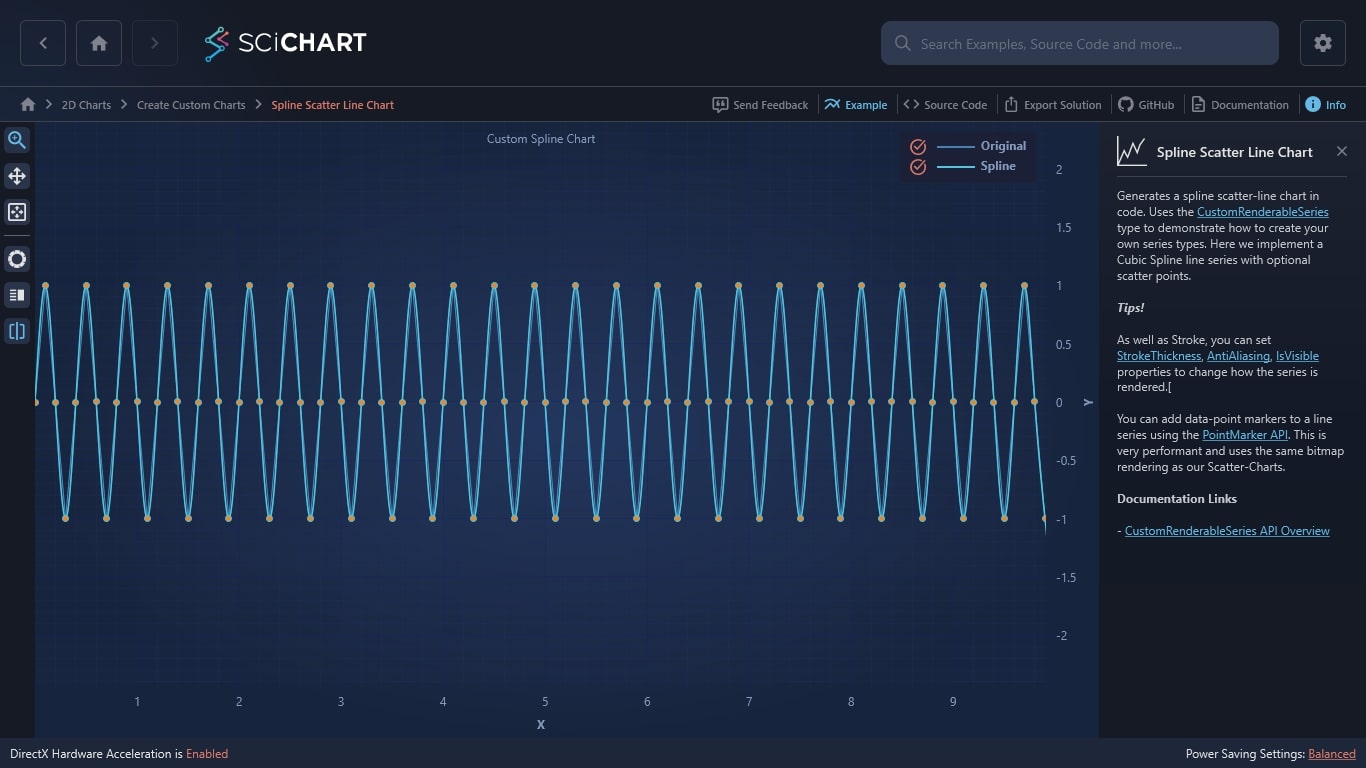WPF Chart - Examples
SciChart WPF ships with hundreds of WPF Chart Examples which you can browse, play with, view the source-code and even export each WPF Chart Example to a stand-alone Visual Studio solution. All of this is possible with the new and improved SciChart WPF Examples Suite, which ships as part of the SciChart WPF SDK.
Generates a spline scatter-line chart in code. Uses the CustomRenderableSeries type to demonstrate how to create your own series types. Here we implement a Cubic Spline line series with optional scatter points.
Tips!
As well as Stroke, you can set StrokeThickness, AntiAliasing, IsVisible properties to change how the series is rendered.[
You can add data-point markers to a line series using the PointMarker API. This is very performant and uses the same bitmap rendering as our Scatter-Charts.
Documentation Links
The C#/WPF source code for the WPF Spline Line Scatter Chart example is included below (Scroll down!).
Did you know you can also view the source code from one of the following sources as well?
- Clone the SciChart.WPF.Examples from Github.
- Or, view source in the SciChart WPF Examples suite.
- Also the SciChart WPF Trial contains the full source for the examples (link below).


